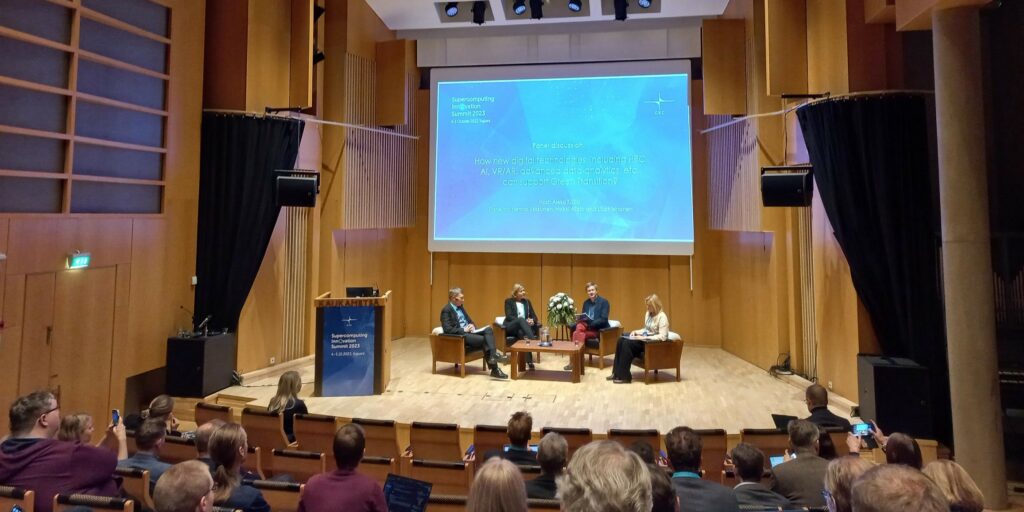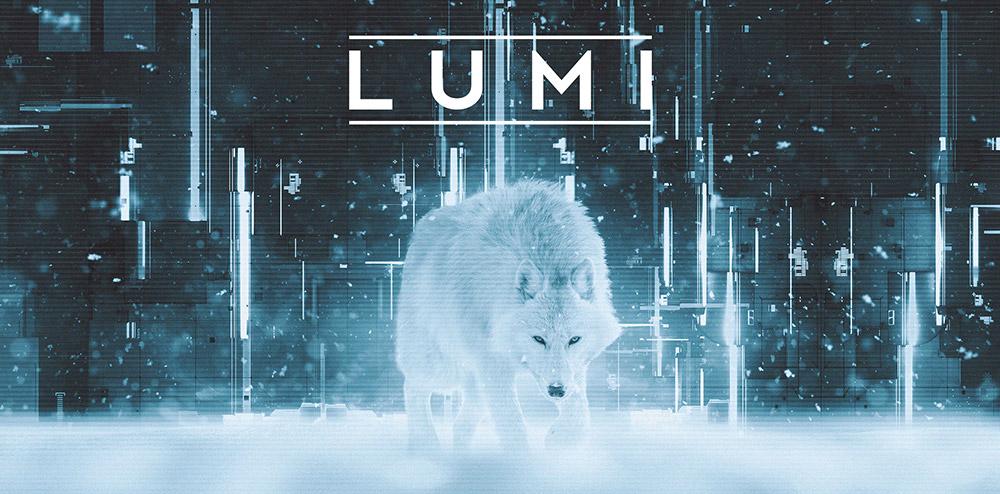Last week, on 4 and 5 October, we visited Kajaani to join the very first Supercomputing Innovation Summit. The shining star was the Finnish supercomputer LUMI.
Supercomputing for business
The event was opened by Kimmo Koski from CSC, the company behind LUMI, who gave a very nice introductory talk about LUMI itself, how it came to be and many examples on its use. After his presentation, the first session of the day started, on supercomputing for business. Now that LUMI is fully operational, it’s available for business, and it has already been used quite thoroughly. A very good thing is that it’s not just available for big companies, also the smaller ones can make use of LUMI’s resources.
LUMI use cases: fire safety and drug design
An interesting and useful example of its use comes from the company of Ramboll, who use LUMI in order to very quickly calculate various fire-spread models related to building safety. With these models, they make sure that a building design conforms to the fire safety rules. Another use case comes from the University of Eastern Finland (UEF), who use the calculating power of LUMI in their research on drug design.
How to get started with the LUMI supercomputer
The second session started with Outi Keski-Äijö from Business Finland, and she explained that they have funding available for companies and research projects that want to use LUMI. Research projects have an advantage here; if they publish their research results, they can use LUMI free of charge. Additionally, Rasmus Kronberg from CSC explained how companies can get expert support on how to use LUMI, using a browser-based environment.
LUMI use case: radar images
During this session, another success story was told by Tapio Friberg from ICEYE, who told about their company using LUMI for calculating near-real-time radar images even through clouds and storms. They can for example spot a flooding happening somewhere, even through a hurricane, or keep an eye on remote foresting happening independent of the weather conditions.
After an excellent dinner at Haapala Brewery, it was time to go to the hotels to rest for the sessions of the next day.

New technologies
The next day started with a keynote from Tero Ojanperä from Silo AI, explaining about the vast number of options that AI gives us, from the well-known ChatGPT and the rendering of images based on a single prompt, to creating music and coding entire applications. With this, he kicked off the third and last session, on the latest advancements and future plans of advanced technologies in Finland. VTT started with a talk on possible applications of their quantum computer, and on their soon-to-be-launched second quantum computer which was launched less than a week later, on the 10th of October. This was followed by Aleksi Kallio from CSC talking about using AI and supercomputing in your business.
LUMI use case: secure identification
The last use case talk was from Candour, who provides identity verification technology based on biometric data. Their solution is both fast and safe and makes sure that the person to be identified is both alive and conscious, to prevent misuse. This greatly helps companies in many processes and keeps their information safe.
Green transition and LUMI visit
In the afternoon, Henna Virkkunen (Member of the European Parliament) talked about the digital and green transition of the EU, and on where Finland stands compared to the rest of Europe and the world. We are already quite far, but there is certainly still room for improvement. After this educational talk we came to the end, with a panel discussion on how digital technologies can support green transition.

Once the talks were done, we had the great opportunity to visit the LUMI Data Center, to see the supercomputer with our own eyes after learning so much about it. It was certainly very impressive; the massive computer did not only have excellent design, but it is also one of the greenest supercomputers on earth. The energy it needs comes from wind and water, while the heat of their cooling system is used to heat up to 20% of the local houses.
After these excellent two days we all went home brimming with interesting new information and surely many new ideas involving the use of LUMI.
If you are interested in using LUMI yourself, get in touch with us and we can help you find what you need.
Text by Arjane Kerkhoven
We will post updates throughout the month on ICTOulu, as well as on our LinkedIn channel. If you want to know more about our activities and we how can support your business, please feel free to contact us.
